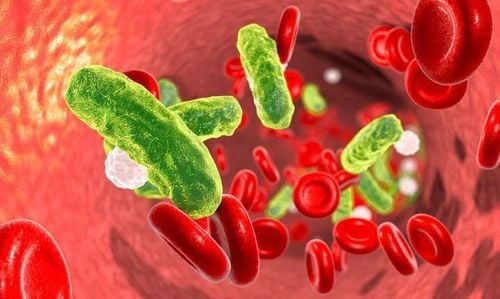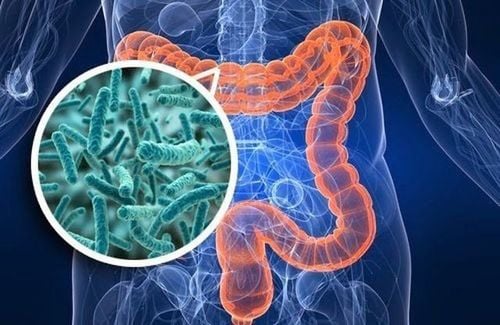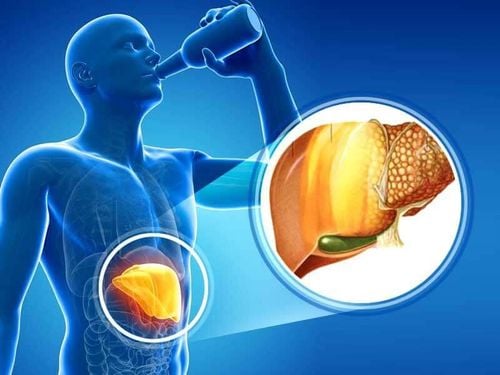This is an automatically translated article.
Post by Master, Doctor Mai Vien Phuong - Gastrointestinal Endoscopy - Department of Medical Examination & Internal Medicine - Vinmec Central Park International General Hospital.
Environmental, genetic and metabolic factors as well as altered gut microbiota are involved in the pathogenesis of NAFLD. Bile acids and metabolites help maintain homeostasis of glucose, cholesterol and triglycerides in the liver and regulate inflammation. This is considered a potential therapeutic target for nonalcoholic fatty liver disease.
1. Overview
Non-alcoholic fatty liver disease (NAFLD) is a clinical syndrome characterized by excessive fat deposition in liver cells and tissues due to factors other than alcohol and other precise causes of liver damage. liver injury. In the absence of effective interventions, nonalcoholic fatty liver disease can progress to fibrosis, cirrhosis, and hepatocellular carcinoma. Environmental, genetic and metabolic factors as well as altered gut microbiota are involved in the pathogenesis of NAFLD. Bile acids and metabolites help maintain homeostasis of glucose, cholesterol and triglycerides in the liver and regulate inflammation. This is considered a potential therapeutic target for nonalcoholic fatty liver disease.
2. The Intimate Link Between the Liver and Intestines The intimate connection between the liver and intestines performs many essential functions. This intimate relationship is important for innate immune surveillance, regulation of the adaptive immune response and nutrient metabolism, and for the elimination of toxic microbial metabolites. The interaction between the gut microbiota and bile acids is bidirectional. The gut microbiota regulates bile acid synthesis and their bio-signaling and circulatory activity through enzymes. Likewise, bile acids also shape the composition of the gut microbiota by modulating the host's natural antimicrobial defenses and the gut immune system. The interaction between bile acids and the gut microbiota is implicated in the pathophysiology of many intestinal and intestinal diseases, especially liver diseases.

3. The role of bile acids may influence the development of nonalcoholic fatty liver disease
Recent studies have revealed that the role of bile acids as signaling molecules can influence the development of NAFLD to several degrees. These regulatory activities are mainly carried out by FXR, TGR5, and various bile acids that have different effects on these two signaling pathways.
FXR can regulate lipid and glucose metabolism through various pathways, such as by inhibiting the expression of gluconeogenes-producing genes and increasing hepatic glycogen synthesis and insulin sensitivity. It can also induce the expression and secretion of liver fibroblast growth factor 21 (FGF21), a metabolic regulatory factor that can stimulate glucose uptake in adipose tissue. In addition, FXR activation inhibits adipogenesis, promotes fatty acid oxidation, and affects cholesterol transport.
Bile acids can also activate G protein-binding receptors. TGR5 is expressed in non-parenchymal hepatocytes, monocytes, a variety of macrophages that secrete inflammatory mediators, and play an important role important in the regulation of inflammatory responses. Bile acids can inhibit lipopolysaccharide-induced secretion of interleukin (IL)-6, IL-1A and IL-1B. In addition, bile acids can inhibit the secretion of tumor necrosis factor factor by Kupffer cells through a TGR5-cAMP-dependent pathway.
TGR5 can also regulate glucose homeostasis by inducing the expression of glucagon-like peptide-1 and inhibiting the activation of the Nod-like receptor 3 protein 3. Activation of TGR5 leads to increased energy expenditure and lose weight. TGR5 or FXR agonists can reduce lipogenesis, improve blood cholesterol, induce energy expenditure, and reduce hepatitis in patients with nonalcoholic fatty liver disease.
4. Disturbances of bile acid homeostasis and related signaling pathways in the occurrence of NAFLD Clinical studies have shown disturbances of bile acid homeostasis and related signaling pathways in the occurrence of nonalcoholic fatty liver disease. Serum concentrations of total bile acids in patients with nonalcoholic steatohepatitis were three times higher than in healthy subjects. Furthermore, the composition of bile acid pools also differed in these two groups. Bile acids have a direct antibacterial effect, through FXR they can produce antimicrobial peptides, such as angiogenin 1, which are involved in the formation of the gut microbiota. During the development and progression of NAFLD, disruption of the bile acid balance is also accompanied by a disruption of the gut microbiota. Therefore, the hepatobiliary-intestinal microbiome triangle is a good entry point for the treatment of nonalcoholic fatty liver disease.
5. Obeticholic acid (OCA) reduces markers of liver fibrosis and improves insulin resistance In two human studies, obeticholic acid (OCA), an FXR agonist, was shown to reduce markers liver fibrosis and amelioration of insulin resistance in patients with nonalcoholic fatty liver disease. OCA-treated patients showed a significant reduction in high-density lipoprotein and increased low-density lipoprotein levels. Compared with the placebo-treated group, OCA significantly improved nonalcoholic fatty liver disease activity score while significantly reducing liver fibrosis. As a cholic acid derivative, INT-777 is a selective agonist of TGR5 that increases energy expenditure and weight loss in high-fat-fed mice. McMahan et al found that INT-767, a dual agonist of FXR/TGR5 can reduce the expression of proinflammatory factors, reduce hepatic steatosis, and transform monocytes and macrophages. into the anti-inflammatory M2 phenotype.
Please dial HOTLINE for more information or register for an appointment HERE. Download MyVinmec app to make appointments faster and to manage your bookings easily.
References:
Shao JW, Ge TT, Chen SZ, Wang G, Yang Q, Huang CH, Xu LC, Chen Z. Role of bile acids in liver diseases mediated by the gut microbiome. World J Gastroenterol 2021; 27(22): 3010-3021 [DOI: 10.3748/wjg.v27.i22.3010]














